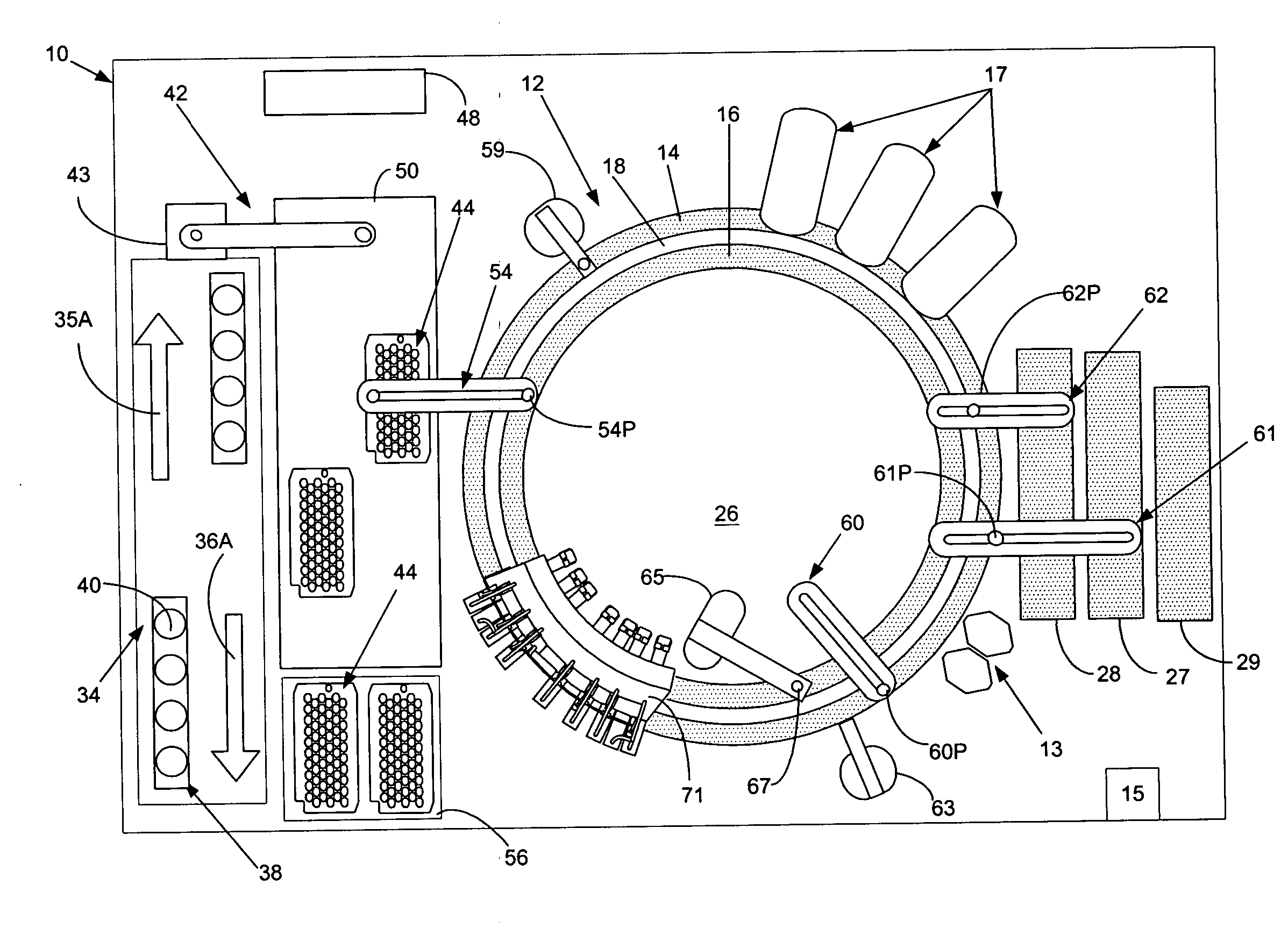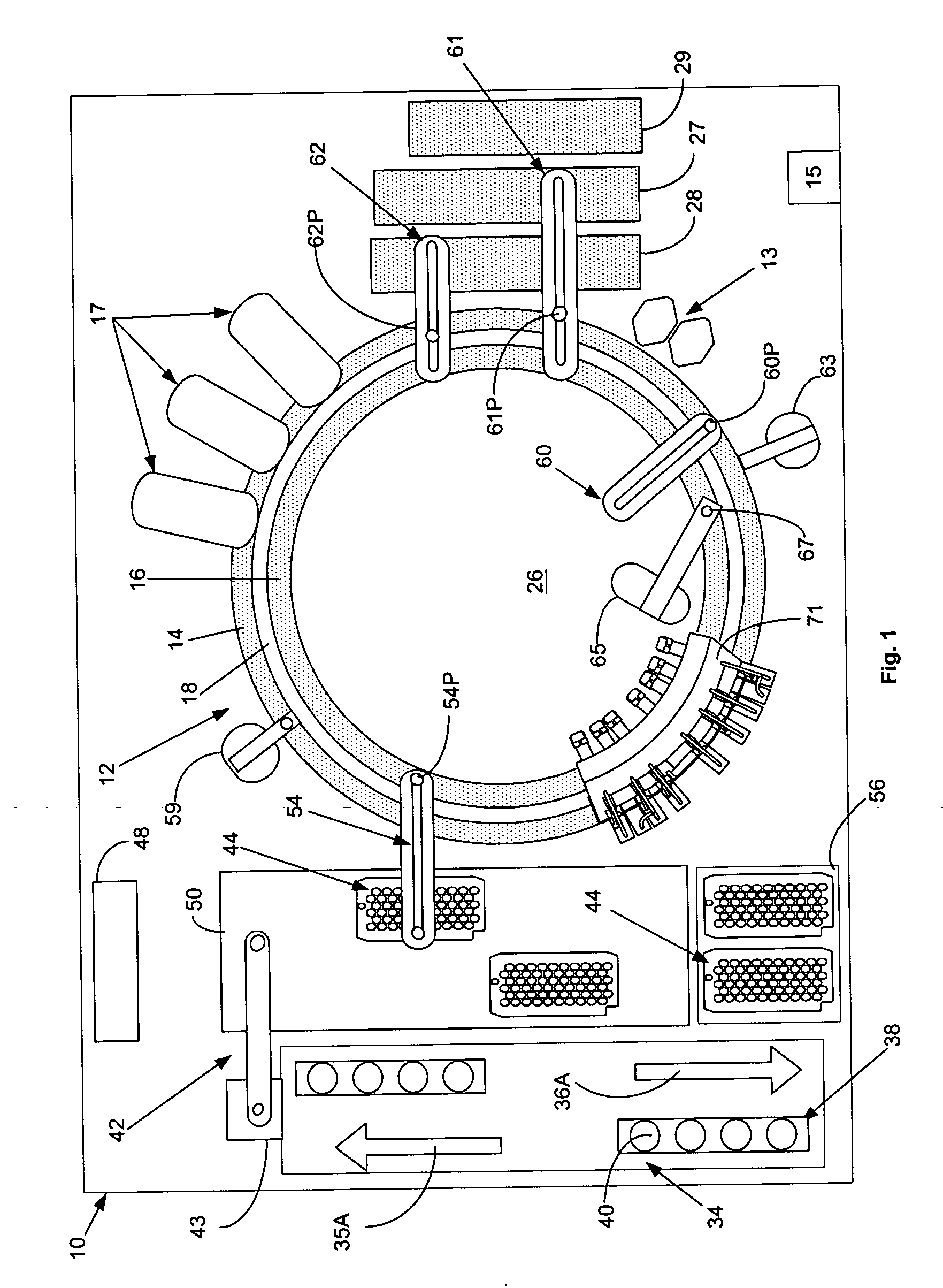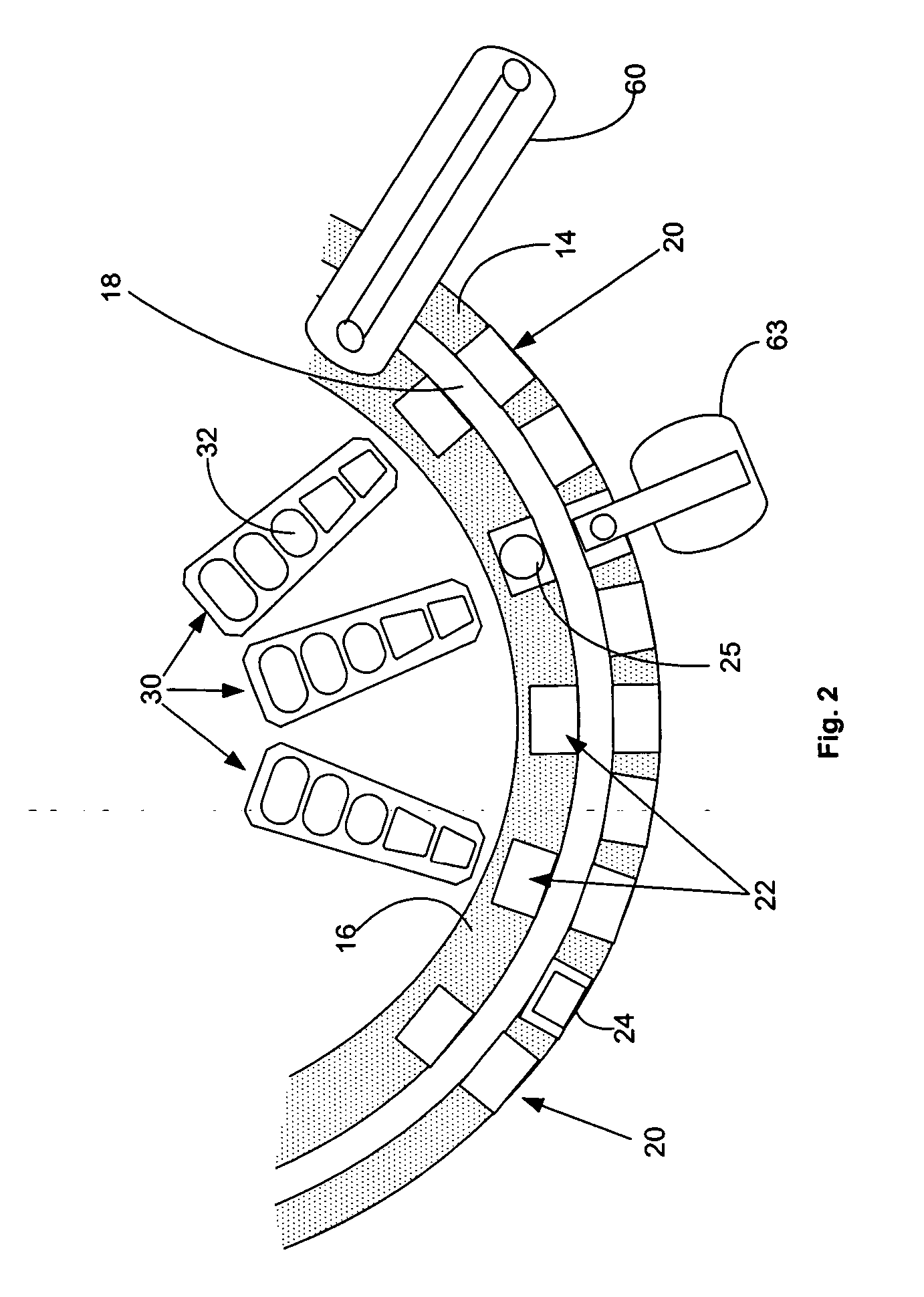Liquid sampling probe and cleaning fluidics system
a liquid sampling and fluidics technology, applied in the direction of instruments, transportation and packaging, laboratory glassware, etc., can solve the problems of aerosol particles formation, increased operation cost, and spillage and contamination
- Summary
- Abstract
- Description
- Claims
- Application Information
AI Technical Summary
Benefits of technology
Problems solved by technology
Method used
Image
Examples
Embodiment Construction
[0037]FIG. 1, taken with FIG. 2, shows schematically the elements of an automatic chemical analyzer 10 in which the present invention may be advantageously practiced, analyzer 10 comprising a reaction carousel 12 supporting an outer cuvette carousel 14 having cuvette ports 20 formed therein and an inner cuvette carousel 16 having vessel ports 22 formed therein, the outer cuvette carousel 14 and inner cuvette carousel 16 being separated by a open groove 18. Cuvette ports 20 are adapted to receive a plurality of reaction cuvettes 24 that contain various reagents and sample fluids for conventional clinical and immunoassay assays while vessel ports 22 are adapted to receive a plurality of reaction vessels 25 that contain specialized reagents for ultra-high sensitivity luminescent immunoassays. Reaction carousel 12 is rotatable using stepwise movements in a constant direction, the stepwise movements being separated by a constant dwell time during which carousel 12 is maintained stationar...
PUM
| Property | Measurement | Unit |
|---|---|---|
| flow rate | aaaaa | aaaaa |
| volumes | aaaaa | aaaaa |
| length | aaaaa | aaaaa |
Abstract
Description
Claims
Application Information
 Login to View More
Login to View More - R&D
- Intellectual Property
- Life Sciences
- Materials
- Tech Scout
- Unparalleled Data Quality
- Higher Quality Content
- 60% Fewer Hallucinations
Browse by: Latest US Patents, China's latest patents, Technical Efficacy Thesaurus, Application Domain, Technology Topic, Popular Technical Reports.
© 2025 PatSnap. All rights reserved.Legal|Privacy policy|Modern Slavery Act Transparency Statement|Sitemap|About US| Contact US: help@patsnap.com



